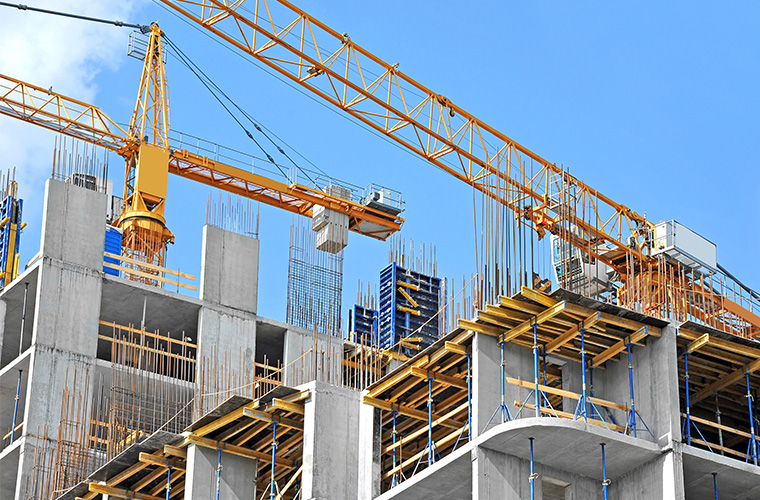 Construction workers are exposed to various hazards on the job site. Among these hazards, noise and vibration pose significant risks to their health and well-being. Understanding these risks is crucial for implementing effective safety measures and ensuring
a healthy work environment.
Construction workers are exposed to various hazards on the job site. Among these hazards, noise and vibration pose significant risks to their health and well-being. Understanding these risks is crucial for implementing effective safety measures and ensuring
a healthy work environment.
Effects of Noise Exposure on Health
Prolonged exposure to high levels of noise can lead to several health issues:
- Hearing Loss: Constant exposure to loud noises can result in temporary or permanent hearing loss. This is particularly prevalent among construction workers who often work with heavy machinery.
- Tinnitus: Persistent ringing in the ears, known as tinnitus, is another common effect of noise exposure.
- Stress and Fatigue: Noise can increase stress levels and contribute to physical and mental fatigue, reducing overall productivity and safety on site.
- Cardiovascular Problems: Long-term exposure to high noise levels can increase the risk of cardiovascular disease due to stress and elevated blood pressure.
Effects of Vibration Exposure on Health
Vibration hazards are another concern in the construction industry, primarily affecting operators of heavy equipment and handheld power tools:
- Hand-Arm Vibration Syndrome (HAVS): This condition affects blood vessels, nerves, muscles, and joints in the hand and arm. Symptoms include numbness, pain, and reduced grip strength.
- Whole-Body Vibration (WBV): This occurs when the entire body is subjected to vibration, often experienced by operators of heavy vehicles. It can lead to musculoskeletal disorders, lower back pain, and spinal issues.
Measuring Noise and Vibration Exposure
Effective management of noise and vibration risks begins with accurate measurement and monitoring. Here's how construction sites can implement these practices:
- Noise Monitoring: Utilize sound level meters and dosimeters to measure noise levels on the construction site. These devices provide real-time data and help assess whether noise exposure exceeds recommended safety limits set by occupational
health standards such as OSHA or NIOSH.
- Vibration Monitoring: Measure vibration exposure using accelerometers and human vibration meters. These tools help quantify both hand-arm and whole-body vibration levels, ensuring they remain within safe boundaries to prevent long-term
health issues.
- Regular Assessment: Conducting regular noise and vibration assessments ensures that any changes in machinery, work processes, or site layout are promptly addressed. This ongoing evaluation helps maintain a safe working environment
for all employees.
- Data Analysis and Reporting: Analyzing the collected data allows for creating detailed reports. These reports can guide the implementation of additional safety controls and adjustments in work practices to reduce exposure effectively.
By integrating these measurement techniques, employers can continue to prioritize safety and ensure the health and well-being of their workforce engaged in construction and other industries.
Noise and Vibration Mitigation Strategies
To minimize the risks associated with noise and vibration, construction companies can implement the following measures:
- Use of Personal Protective Equipment (PPE): Providing workers with ear protection, such as earplugs or earmuffs, and anti-vibration gloves can help reduce exposure.
- Regular Maintenance of Equipment: Well-maintained machinery operates more quietly and with less vibration, reducing the risk to operators.
- Job Rotation and Breaks: Scheduling regular breaks and rotating tasks can minimize prolonged exposure to noise and vibration.
- Engineering Controls: Implementing barriers or sound-dampening materials on the site can help reduce noise levels. Similarly, anti-vibration mounts or dampeners can be used for machinery.
- Training and Awareness: Educating workers about the risks and preventive measures can foster a culture of safety and vigilance.
The health and safety of construction workers should be a top priority for any company involved in the industry. By acknowledging the risks associated with noise and vibration and implementing effective safety measures, companies can protect their workers,
improve job satisfaction, and maintain a productive workforce.
 Construction workers are exposed to various hazards on the job site. Among these hazards, noise and vibration pose significant risks to their health and well-being. Understanding these risks is crucial for implementing effective safety measures and ensuring
a healthy work environment.
Construction workers are exposed to various hazards on the job site. Among these hazards, noise and vibration pose significant risks to their health and well-being. Understanding these risks is crucial for implementing effective safety measures and ensuring
a healthy work environment.